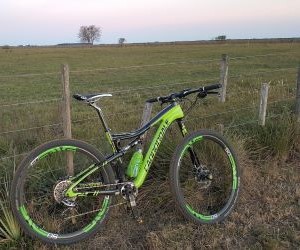Learn how to deal with punctures on long rides with prevention tips, repair techniques, and smart gear choices to keep rolling without stress.
HOW DO I PREPARE FOR LONG-DISTANCE CYCLING EVENTS?
Long-distance cycling events test more than just your legs—they challenge your endurance, nutrition, mental focus, and mechanical preparedness. Whether you're riding a century, gran fondo, brevet, or charity tour, showing up unprepared can turn a dream ride into a sufferfest. The good news? You don’t need pro genes to go the distance—you just need smart prep. This guide covers all the essential elements, from building base miles and fueling properly to packing the right gear and prepping your bike.

Building endurance through structured training
You can’t fake long-distance fitness. Building the aerobic engine necessary for endurance events requires months of consistent, progressive training. The goal is to gradually increase your capacity to ride for hours while staying within an efficient heart rate zone. Structured training also helps you adapt to the mental and physical stress of long rides.
Key training strategies for long rides
Base building: Spend 8–12 weeks developing aerobic fitness with long, steady rides at Zone 2 heart rate (60–70% max HR).
Progressive overload: Gradually increase your weekly volume by no more than 10%, including one long ride per week that builds up to 75–85% of event distance.
Back-to-back rides: Simulate fatigue by riding long on consecutive days—ideal for multi-day event prep.
Specificity: Mimic event terrain and conditions in training (e.g., hills, wind, altitude).
Tapering: Reduce volume 1–2 weeks before your event to allow full recovery and peak performance.
Don’t neglect rest and recovery. Every hard session should be followed by easy spinning or rest to allow adaptations. Overtraining can backfire, leading to fatigue, illness, or injury right before your event.
Use tools like a heart rate monitor or power meter to track intensity and ensure you're not going too hard too often. Aim to keep most training in the aerobic zone, saving high-intensity efforts for mid-week interval sessions or hills.
Finally, simulate your event pace and nutrition during training. Get used to riding for several hours at your intended event speed, practicing hydration and fueling as if it were race day.
Fueling strategies for sustained energy
Nutrition can make or break your long-distance ride. Without adequate fueling, even the fittest cyclists will bonk—hitting the wall of glycogen depletion and muscle fatigue. Smart nutrition starts before the ride and continues steadily throughout the event. It’s all about planning and consistency.
How to fuel before and during long rides
Pre-ride meals: Eat a carb-focused meal (60–100g carbs) 3–4 hours before your ride with some protein and minimal fat/fiber.
On-bike fueling: Consume 30–60g of carbs per hour for rides over 90 minutes; increase to 90g/hour for events over 4 hours if tolerated.
Hydration: Drink 500–750ml of fluids per hour. Include electrolytes—especially sodium—to maintain balance and prevent cramping.
Snack timing: Eat something small every 20–30 minutes, even if you don’t feel hungry, to avoid energy dips.
Practice in training: Use the same nutrition brands and timing in practice to avoid gut issues on event day.
Aim for a mix of simple and complex carbs—energy gels, bananas, energy bars, and even real food like rice cakes or peanut butter sandwiches for ultra-distance events. Liquids can help deliver carbs too, especially in hot weather.
Be wary of under-fueling early in the ride. Many riders delay eating because they feel fresh, only to crash hard later. Start fueling within the first 30–45 minutes and keep a steady intake throughout.
During your final week, increase carb intake slightly to top off glycogen stores. This doesn’t mean stuffing yourself—it means adding a bit more rice, oats, or pasta to meals leading into your ride.
After the event, refuel with a 3:1 ratio of carbs to protein within 30–60 minutes to aid recovery and reduce muscle soreness.
Gear, mindset, and logistics
Preparation isn’t just about fitness—it’s also about logistics, gear, and mindset. Showing up with the wrong setup, poor route knowledge, or mental burnout can sabotage months of training. Elite riders obsess over the details for a reason: everything matters when you're riding 100+ kilometers.
Final preparation checklist for long-distance events
Bike check: Tune-up your drivetrain, brakes, and tires. Replace worn chains, cables, and check sealant or tubes.
Gear setup: Choose comfort over speed—wear padded bibs, weather-appropriate layers, and shoes you've already broken in.
Repair kit: Carry a multi-tool, two tubes (even if tubeless), tire levers, patch kit, and a mini pump or CO2.
Navigation tools: Download the route to a GPS device and keep a backup cue sheet or offline map on your phone.
Mental prep: Visualize challenges (wind, cramps, boredom) and how you’ll respond. Break the ride into mental segments to stay engaged.
The night before your ride, prep everything: lay out clothes, check tire pressure, charge electronics, fill bottles, and pack snacks. Sleep well, but don’t panic if nerves keep you awake—adrenaline will get you through the start.
During the event, pace yourself early. Many riders burn too many matches in the first half trying to stay with faster groups. Ride your own pace, check in with how your legs feel every hour, and don’t be afraid to take short stops to stretch and reset.
Long-distance cycling is a mental game. When the going gets tough, remind yourself why you signed up. Use mantras, music, or mini-goals like "make it to the next aid station" to keep momentum. You'll be amazed how much further your body can go when your mind is on board.
And above all—enjoy the ride. You’ve earned the views, the miles, and the satisfaction of finishing strong.
YOU MAY ALSO BE INTERESTED






